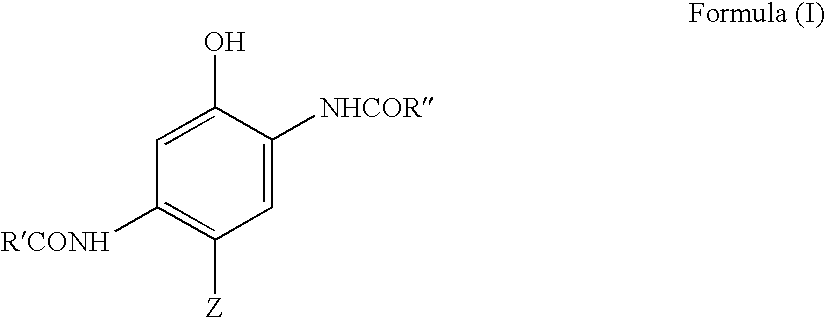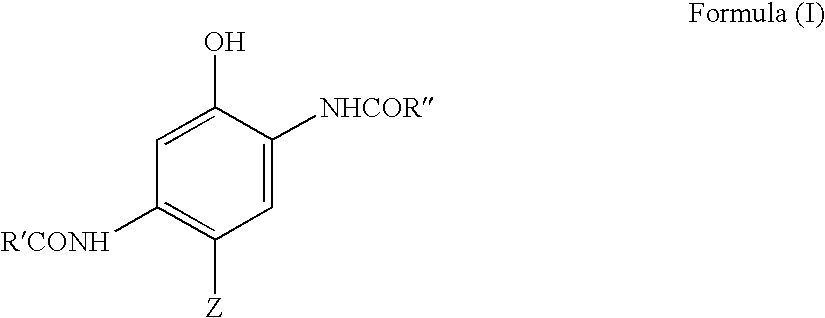Silver Halide Color Photographic Light-Sensitive Material
- Summary
- Abstract
- Description
- Claims
- Application Information
AI Technical Summary
Benefits of technology
Problems solved by technology
Method used
Image
Examples
example i
(Preparation of Blue-Sensitive Layer Emulsion BH-1)
[0284] Using a method of simultaneously adding a silver nitrate solution and a sodium chloride solution into deionized distilled water containing a deionized gelatin under stirring to mix these, high-silver chloride cubic grains were prepared. In the course of this preparation, at the step of from 10% to 20% addition of the entire silver nitrate amount, Cs2[OsCl5(NO)] was added. At the step of from 70% to 85% addition of the entire silver nitrate amount, potassium bromide (3.0 mol %, per mol of the finished silver halide) and K4[Fe(CN)6] were added. K2[IrCl6] was added at the step of from 75% to 80% addition of the entire silver nitrate amount. K2[IrCl5(H2O)] and K[IrCl4(H2O)2] were added at the step of from 88% to 98% addition of the entire silver nitrate amount. Potassium iodide (0.4 mol %, per mol of the finished silver halide) was added, under vigorous stirring, at the step of completion of 93% addition of the entire silver ni...
example 2
[0323] Samples 201 to 205 and Samples 211 to 215 were prepared in the same manner as Samples 101 to 105 and Samples 111 to 115 in Example 1, respectively, except that the silver halide emulsion and the emulsified dispersion for the red-sensitive layer were mixed and dissolved, followed by allowing the resultant solution to stand for 6 hours, and then applied.
[0324] Each structure of the emulsion and the coupler are as shown in Table 4.
TABLE 4SampleEmulsionCoupler201RH-1ExC-1, ExC-2, ExC-3202RH-2ExC-1, ExC-2, ExC-3203RH-3ExC-1, ExC-2, ExC-3204RH-4ExC-1, ExC-2, ExC-3205RH-5ExC-1, ExC-2, ExC-3211RH-1IC-22212RH-2IC-6213RH-3IC-29214RH-4IC-30215RH-5IC-23
[0325] Each sample was exposed to light and processed (Processing B) in the same manner as in Example 1, to compare variations in the characteristics of Samples 201 to 205 and 211 to 215 from those of Sample 101 to 105 and 111 to 115.
[0326] The density of developed cyan color of each sample after the sample was processed was measured, ...
PUM
 Login to View More
Login to View More Abstract
Description
Claims
Application Information
 Login to View More
Login to View More - R&D Engineer
- R&D Manager
- IP Professional
- Industry Leading Data Capabilities
- Powerful AI technology
- Patent DNA Extraction
Browse by: Latest US Patents, China's latest patents, Technical Efficacy Thesaurus, Application Domain, Technology Topic, Popular Technical Reports.
© 2024 PatSnap. All rights reserved.Legal|Privacy policy|Modern Slavery Act Transparency Statement|Sitemap|About US| Contact US: help@patsnap.com










